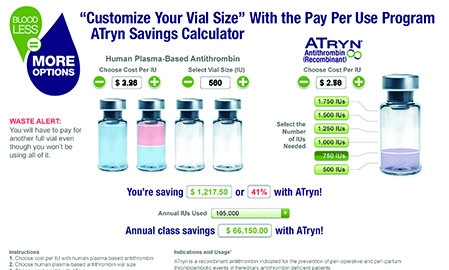Beacon Healthcare Communications
Bringing attention to an agency can be done in several different ways: create a campaign that makes it into Nielsen’s top 10 most recognized (as in remembered) ads, be the only pharmaceutical campaign to do so, design a distinct client approach, or invigorate the home brand with a mix of social outreach and/or high-impact visuals.
You could also do all of the above, which is what the 70-person Bedminster, NJ, agency Beacon Healthcare Communications did in 2013.
“We are up there with State Farm… Bud Light… and several other big consumer brands, so it is exciting for us to be the only pharma ad in that mix,” Beacon’s president Larry Lannino tells MM&M. He proudly points out another fact: the attention-grabbing television ad for Allergan’s dry seye medication Restasis was not only in the overall top 10, but was the number-one most-recognized ad among women.
The agency’s campaign for Restasis captured the essence of its newly evolved approach, which is to be what the firm calls “engagement architects.” Lannino says engagement is a popular term with multiple definitions, but Beacon “decided to define it in our own way,” which is summed up in the company’s “engagement moment” concept, which is “a key moment in time, a key moment of truth for the customer.”
For Restasis, general manager Adrienne Lee says this moment was when consumers “got to a level of using artificial tears that was impacting their lifestyle. They were using them at movies, in front of the computer,” and the Restasis strategy was to “challenge them to ask their doctor what those symptoms might mean.”
The campaign included a meta moment of sorts in that the eye doctor they chose for the commercials was a Restasis user, which added a layer of a consumer seeing a need and seeing a professional who prescribes and uses the prescription for the shared condition.
The ad’s success was a win both for the client and for Beacon. “It’s generating a lot of interest among many small- to mid-size companies who want to realize the same benefit of the larger pharmaceutical companies,” Lannino says. This means future hopefuls could join a client list that includes rare-disease company rEVO Biologics and Alkermes, as well as EMD Serono.
While Beacon continues to pitch new business, Lannino says most of its growth has come from existing client relationships, and this growth—which in 2013 was around 15% more than 2012—has included adding Gavin Valle as group copy supervisor (a new role) and elevating Gareth Birch to senior account director.
Last year’s expansion also included acquiring Spring Street Digital. The two companies had worked together in the past and Lannino says the acquisition has been an asset for Beacon and clients because “now we can provide a seamless offering in the digital world.”
This all-in kind of approach also characterizes how Beacon approaches clients, which is with a full vision, even if they’ve only got a piece of the client’s business. This means Beacon comes to the table with the assigned work, such as for professional communications, as well as with insights from its consumer strategist.
The company says it is also being tapped to insert these potential engagement opportunities earlier in the drug development process—as in, when clinical trials are being designed—so clients can front-load their data requests with questions that will pay off when it comes to presenting their products within the human context, meaning providing both physical impact information, and insights that address the patient/payer/provider thought processes when contemplating treatment.
“Communications are so intertwined . . . a physician can no longer just prescribe a drug. They have to go through managed care organizations,” Lannino says, or “a patient comes in the door just because they saw something on TV.” This interplay, he adds, not only identifies the architecture of engaged moments, but orchestrates the multiple experiences that take place.
From the July 01, 2014 Issue of MM+M - Medical Marketing and Media







